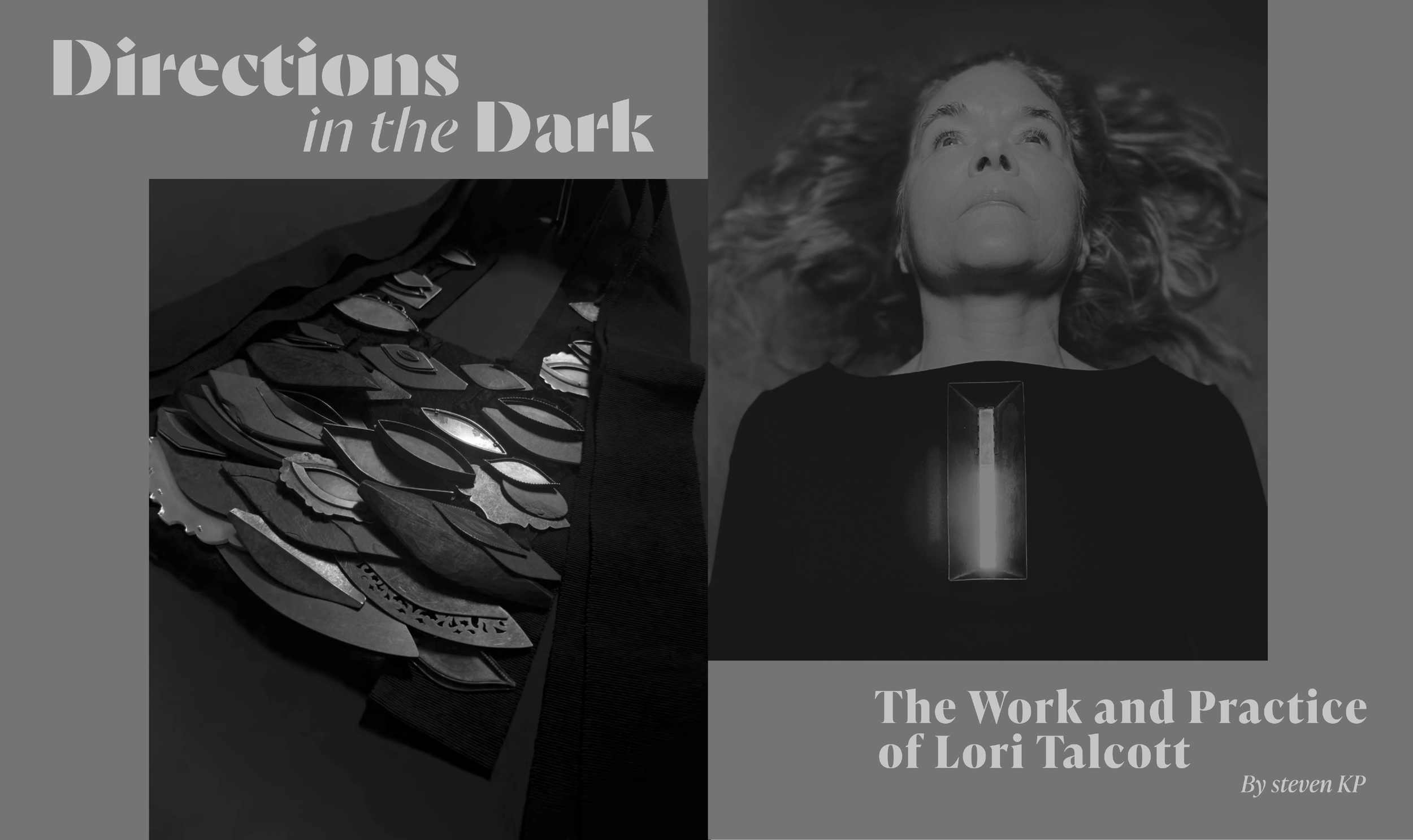
L O R I T A L C O T T
material etymologies
“…what is specific to jewelry, however, is that it does all this in a portable, wearable format that can be understood as both embodied experience and abstract idea. Its intimate scale and relationship with the body can be the means by which the largest thing – a belief system, the unknowable, the cosmos – is writ small and encapsulated, then able to unfold outward into an infinite web of meanings.”
“Understanding the Largest Thing through the Smallest Thing,” Lori Talcott
ARTIST STATEMENT
Through the format of jewelry,
my work engages with contemporary theories on magic, object agency, and the nexus of language and matter. Integral to my studio practice is my lifelong study of art and mysticism from the European medieval period. My work often references this time as a conceptual framework, not as an anachronistic exercise, but as a way to explore earlier modes of being in the world that I believe are relevant and vital to us today.
Medieval works of art were intimate and performative,
grounded in the materials from which they were made. Boundaries between material and immaterial, beings and things, were porous: words, gestures, and objects had a reciprocal and poetic relationship. These ideas are central to my work: how jewelry functions as a rhetorical device, serving as an agent in rituals that negotiate social, temporal, and spiritual boundaries. Reflecting on my history as a maker, I see that my work has moved from representing an idea to being the idea – especially in my more performative work.
Whether current neuroscience or medieval alchemy,
both investigate the transformative potential of matter: we respond to and are transformed by materials, as they are to us – in a mutual reciprocity. As a craft-based artist, my aim is not one of mastery, but of intimacy. My desire is to get as close to something as possible: ideas, processes, and materials.
I work from an apothecary of materials
- all considered to be intrinsically powerful with their own intelligence and therapeutic potential. The dark palette that binds much of my work is a space of in-betweenness, a space that holds both unknowing and generativity.
My work is speculative:
it proposes what might be possible within the subjunctive space of “what if” and “as if.” It considers how jewelry functions as a magical, mnemonic device – as an archive that gives us access to a body of knowledge and experience.
Directions in the Dark
The Work and Practice of Lori Talcott by steven KP
METALSMITH Volume 45, 2025
CONTEMPORARY WORK
TRADITIONAL WORK
Parallel to my work as a contemporary artist is my training in and devotion to a folk-art tradition. Following my BFA, I worked as an apprentice to a master silversmith in Norway – one of the few places in Europe that still has a living, unbroken folk jewelry tradition. The aesthetic and technical knowledge, as well as the inherent folklore, has been passed from master to apprentice since the medieval period. This tradition is not about producing historical replicas, but is akin to learning a complex, visual language, where one must become fluent in order to produce new versions of a traditional “standard.” The belief system and folklore embedded within this traditional training – the ritualized relationship with objects – reverberates through my contemporary art work today. UNESCO has recently added Norway’s bunad-use (folk costume use) to the practices protected as Intangible Cultural Knowledge. The folk jewelry, and traditional silversmithing practice which produces it, is included in this protected ephemeral knowledge. A fragile ecosystem, intangible cultural heritage is a vital factor in maintaining cultural diversity in the face of growing globalization.
DRAKTSØLV TRADITIONAL WORK
Lori Talcott
grew up in a family of jewelers and watchmakers. She was taught that one could make anything, and that jewelry is inherently imbued with power and magic. Through the format of jewelry, her work and research engage with contemporary theories on magic, the agency of objects, and the nexus of language and matter. Her performance projects explore the role of jewelry as a rhetorical device, and in this capacity, how it functions as an agent in rituals that negotiate social, temporal, and spiritual boundaries.













